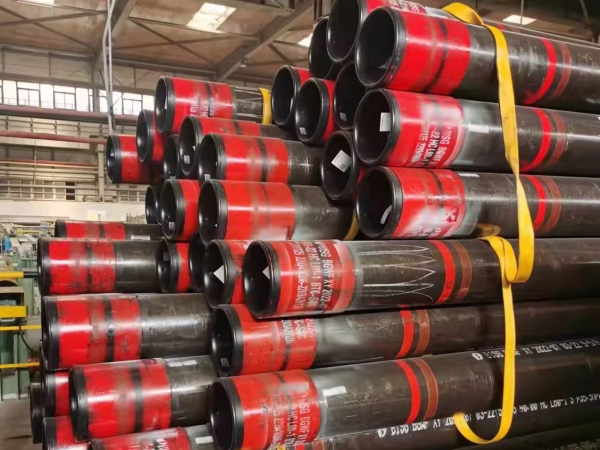Oil casing pipes are sophisticated steel pipe products that undergo rigorous testing throughout their production and installation to ensure their reliability and safety in the oil industry. Here's an overview of the key inspection methods used:

Ultrasonic Testing (UT):
Ultrasonic testing involves the transmission of ultrasonic waves through the material. Variations in the material's acoustic properties and internal structure affect the propagation of these waves. By analyzing the extent and nature of these effects, the integrity and structural soundness of the material can be assessed.
Radiographic Testing (RT):
This method exploits the differential absorption of radiation by sound and defective areas within the material. The resulting differences in radiation intensity on the radiographic film highlight the presence of defects.
Penetrant Testing (PT):
Penetrants are used to detect surface-breaking defects through their capillary action, which draws the penetrant into surface defects. A developer is then used to extract the penetrant, revealing the defects. This method is quick, usually taking about half an hour, and is effective for identifying fatigue cracks, stress corrosion, and welding defects, with the added benefit of being able to measure crack sizes directly.
Magnetic Particle Testing (MT):
This technique relies on the leakage of magnetic flux around defects to attract magnetic particles, creating visible indications of flaws. It is capable of detecting both surface and sub-surface discontinuities and is unaffected by the presence of paint or electroplated coatings.
Eddy Current Testing (ET):
Eddy current testing assesses the internal quality of conductive materials by inducing eddy currents within the test piece using a ferromagnetic coil. It can identify surface and near-surface defects but can be challenging to perform accurately due to the complexity of controlling the testing parameters and interpreting the results.
Magnetic Flux Leakage (MFL) Detection:
This detection method capitalizes on the high magnetic permeability of ferromagnetic materials to evaluate the condition of in-service oil casings. It measures changes in magnetic permeability that are indicative of material defects.
Magnetic Memory Detection:
This innovative technique is based on the correlation between the physical properties of magnetic phenomena in metals and the metal's dislocation processes. It offers numerous advantages, including high efficiency, cost-effectiveness, and the absence of a need for surface preparation. It holds significant promise for industrial applications.
Each of these testing methods plays a crucial role in the quality assurance process for oil casing pipes, ensuring that they meet the stringent standards required for their critical applications in the oil and gas sector.